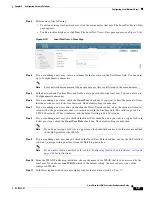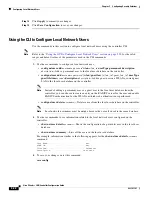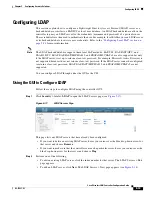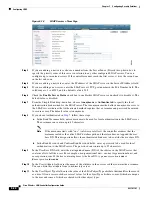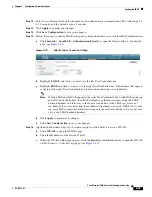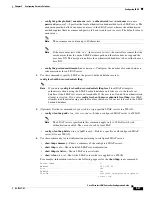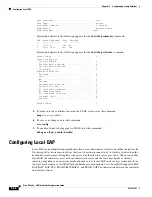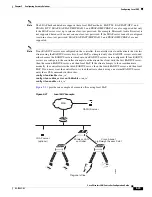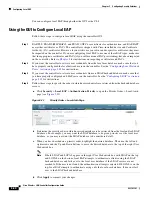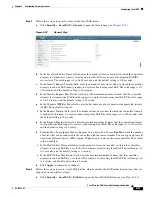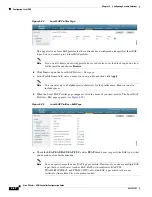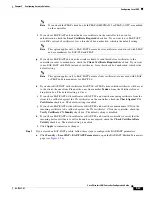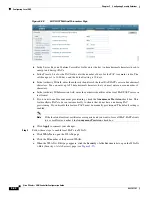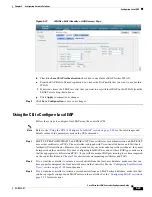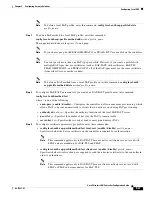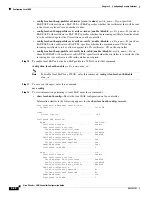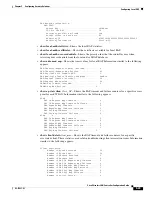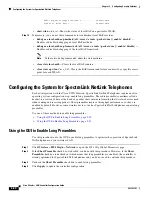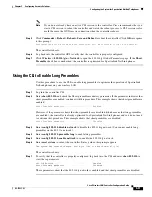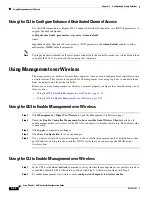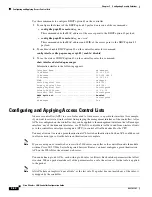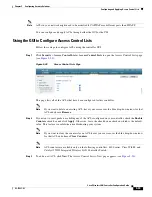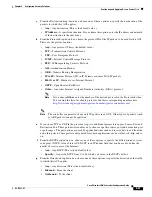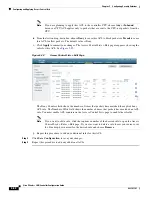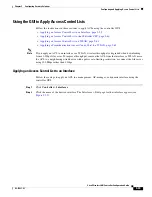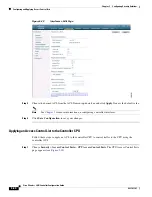
5-45
Cisco Wireless LAN Controller Configuration Guide
OL-17037-01
Chapter 5 Configuring Security Solutions
Configuring Local EAP
Figure 5-27
WLANs > Edit (Security > AAA Servers) Page
d.
Check the
Local EAP Authentication
check box to enable local EAP for this WLAN.
e.
From the EAP Profile Name drop-down box, choose the EAP profile that you want to use for this
WLAN.
f.
If desired, choose the LDAP server(s) that you want to use with local EAP on this WLAN from the
LDAP Servers drop-down boxes.
g.
Click
Apply
to commit your changes.
Step 9
Click
Save Configuration
to save your changes.
Using the CLI to Configure Local EAP
Follow these steps to configure local EAP using the controller CLI.
Note
Refer to the
“Using the GUI to Configure Local EAP” section on page 5-40
for the valid ranges and
default values of the parameters used in the CLI commands.
Step 1
EAP-TLS, PEAPv0/MSCHAPv2, and PEAPv1/GTC use certificates for authentication, and EAP-FAST
uses either certificates or PACs. The controller is shipped with Cisco-installed device and Certificate
Authority (CA) certificates. However, if you wish to use your own vendor-specific certificates, they must
be imported on the controller. If you are configuring local EAP to use one of these EAP types, make sure
that the appropriate certificates and PACs (if you will use manual PAC provisioning) have been imported
on the controller. Refer to
for instructions on importing certificates and PACs.
Step 2
If you want the controller to retrieve user credentials from the local user database, make sure that you
have properly configured the local network users on the controller. See the
for instructions.
Step 3
If you want the controller to retrieve user credentials from an LDAP backend database, make sure that
you have properly configured an LDAP server on the controller. See the
for instructions.

